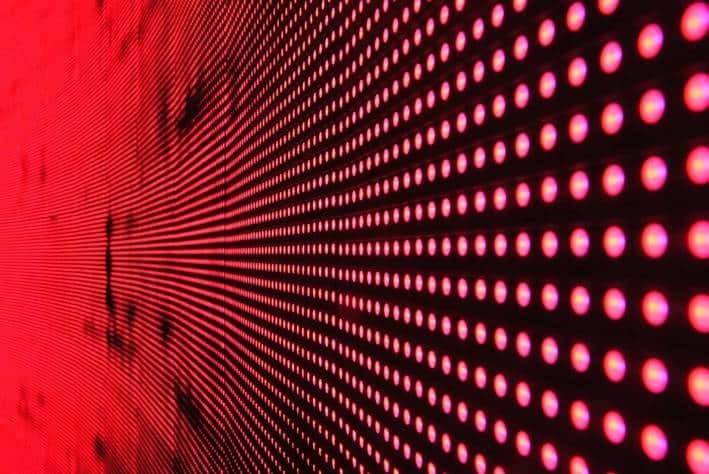Digital screens are made up of small individual units called pixels. The number of pixels along the width and height of a screen gives us its resolution. For example, if a screen has a resolution of 1920 by 1080, that means it has 1920 pixels along the width and 1080 pixels from top to bottom.

But the resolution is not the only factor in determining a screen’s quality. Pixel pitch is also fundamental.
What Is Pixel Pitch?
The pixel pitch refers to the distance from the center of one pixel to the center of the adjacent pixel. The lower the pixel pitch is, the narrower the distance between these two points.
The best pixel pitch to aim for will depend entirely on the circumstances in which the screen in question is to be used. A narrower pixel pitch generally equates to a higher resolution and, therefore, a better-quality image. However, screens with a narrower pixel pitch are more expensive, so much so that the screens with the narrowest pixel pitch tend to be reserved for professional rather than consumer use. Some companies, such as Visual Impact Productions, usually rent LED display screens for different occasions.s
Why It Matters
The pixel pitch of a screen doesn’t just affect its resolution; it plays a part in determining the number of critical features regarding the screen. For example, the optimal viewing angle for a screen is not just determined by its physical size or resolution; pixel pitch significantly influences the optimal viewing distance and angle for a screen.
The pixels on a screen with a narrow pixel pitch are relatively close together. This means that it is more difficult to discern individual pixels when the screen is viewed up close. On the other hand, a screen designed to be viewed from a significant distance can utilize a wider pixel pitch, reducing manufacturing costs without diminishing the viewing experience.
The Benefits of Narrow Pitch LED Walls For Shopping Malls
LED walls have been growing in popularity among the owners of shopping malls and similar public buildings. An LED wall consists of a number of individual panels, each of which is akin to a large screen or television. However, using led walls is a generally better value than investing in a number of different television sets and linking them together.
In most shopping malls, the customers will be getting reasonably close to the LED walls. When LED walls are being viewed up close, a narrow pixel pitch ensures that the image retains its integrity and does not appear fragmented. With a higher pixel pitch, getting close to the screen will reveal the individual pixels, so it becomes difficult to ascertain what is being displayed within a certain distance.
A narrow pixel pitch also reduces the optimal viewing distance, the distance at which a viewer should sit in order to get the most out of a screen. Even in a large shopping mall, viewers will be relatively close to the screen mean, and a wide pixel pitch means they have to stand well back to be able to appreciate the image.
As manufacturing costs continue to slide, LED screens are becoming an increasingly common sight in public places. Shopping malls can utilize LED walls in a variety of different ways. They are an ideal arena for them. A narrow pixel pitch will ensure that the LED wall provides viewers a crisp and clear image.

